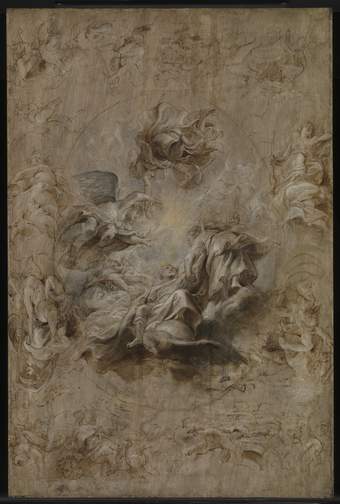
Fig.1
Peter Paul Rubens 1577‒1640
The Apotheosis of James I and Other Studies: Multiple Sketch for the Banqueting House Ceiling, Whitehall c.1628-30
Tate
T12919
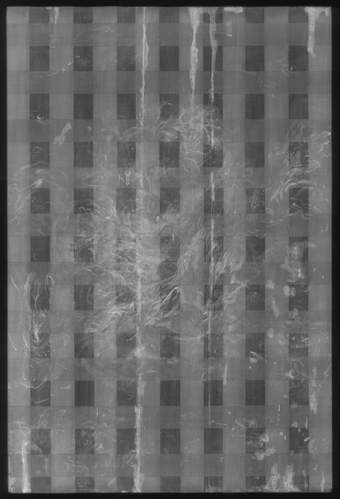
Fig.2
X-radiograph of The Apotheosis of James I and Other Studies: Multiple Sketch for the Banqueting House Ceiling, Whitehall c.1628-30
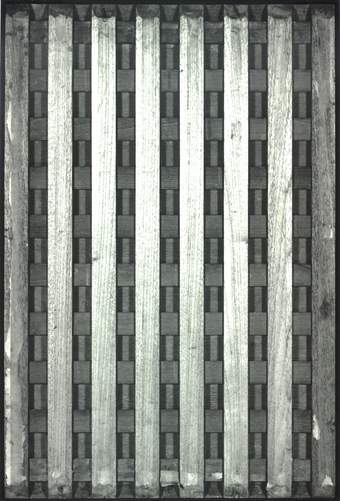
Fig.3
The reverse of The Apotheosis of James I and Other Studies: Multiple Sketch for the Banqueting House Ceiling, Whitehall c.1628-30, showing the mahogany cradle
This painting is in oil paint on oak panel measuring 947 x 630 mm (fig.1). The panel is composed of three vertical boards, butt joined with glue. The left hand board is 255mm wide, the central board 135mm and the right hand board 240mm wide (fig.2). The current thickness of the oak varies between 3 and 3.5 mm. Its original thickness is not known, as it was almost certainly thinned down to the present dimensions when the subsidiary support and cradle (fig.3) were applied. Dendrochronology in 2009 revealed that the two outer boards came from a single tree in the eastern Baltic area. The earliest date they could have been used for this panel is 1622.1 An earliest date was not possible for the central board because it is too narrow.

Fig.4
The Apotheosis of James I and Other Studies: Multiple Sketch for the Banqueting House Ceiling, Whitehall c.1628–30, photographed in ultraviolet light, showing restoration along the old splits
The oak panel is now attached with glue to a subsidiary support – a mahogany board about 4 mm thick. Inspection of the board’s edges indicates that this is a single piece rather than butt-joined planks. Its grain runs at right angles to that of the original panel. A mahogany cradle is attached with glue on its vertical struts to the back of the board (fig.3). It all appears stable. Style-wise the cradle could date from the nineteenth century and the board would appear to be contemporary with it. The application of the board and cradle has created a permanent concave warp in the original. Old, restored splitting in the original is evident in ultraviolet light at the joins and elsewhere (fig.4).
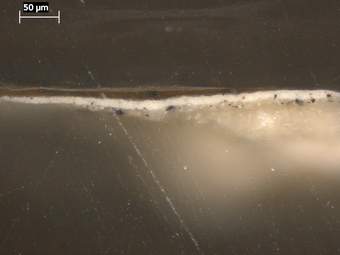
Fig.5
Cross-section through white paint on the extreme left edge from the cornucopia held by the figure of Plenty (the site is shown in fig.7), photographed at x320 magnification. From the bottom: sliver of white ground at the right of the sample; grey priming, composed of large black particles in an semi-opaque pale grey matrix; thick white paint of the curved brushstroke in the cornucopia; brown shading paint; build-up of old varnish on the edge of the panel; modern varnish
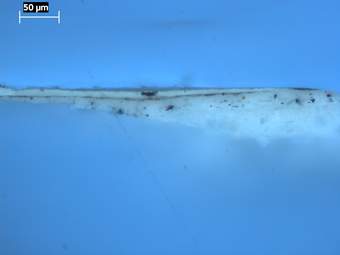
Fig.6
The same cross-section as in fig.5, photographed in ultraviolet light at x320 magnification
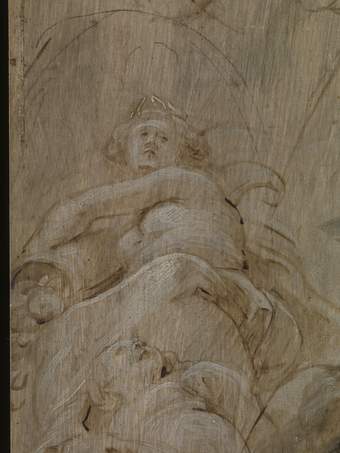
Fig.7
Detail of the figure of Plenty at the left edge, with the streaky priming showing through the final image. The site of the cross-section shown in figs.5 and 6 is the tiny white spot on the edge of the cornucopia
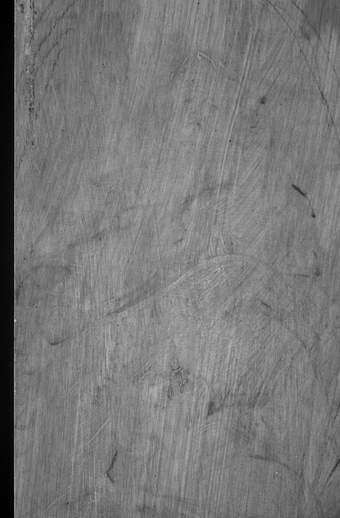
Fig.8
Infrared image of the figure of Plenty at the left edge, showing the streaky priming
The ground is white and appears to be made of powdered chalk (calcium carbonate) bound in a glue medium. Its surface is smooth. When the ground was dry, it was covered over with a priming of semi-translucent, pale grey oil paint, which was applied with a brush in a streaky fashion (figs.5–8). Such streaky primings are found commonly in paintings by artists who trained in Antwerp.
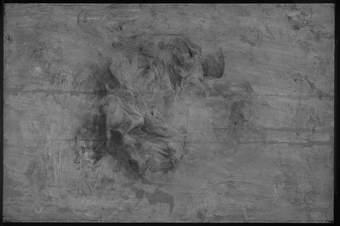
Fig.9
Infrared view of The Apotheosis of James I and Other Studies: Multiple Sketch for the Banqueting House Ceiling, Whitehall c.1628-3, with the painting turned to stand on its right edge to show the underlying figure on the left in its correct alignment
The drawing for an earlier, discarded design (or designs) is visible beneath some parts of the ceiling sketch. The lines are in black paint and they were applied on top of the streaky priming. For this first use the panel was in horizontal format: thus, taking the right vertical as the bottom edge, a figure can be seen standing in the lower left foreground (fig.9). The arm of another figure is discernible to the right of him, though it is not necessarily related to him in terms of composition. Heavy black lines occur also underneath the figures to the left of the king, but their identity is not discernible. The dendrochronological evidence indicates that this drawing cannot have been done before 1622. Underdrawing that relates directly to the ceiling sketch is visible only at the outlines of the lateral cartouches. It was done rapidly with a hard crumbly pointed tool – black chalk or crayon.
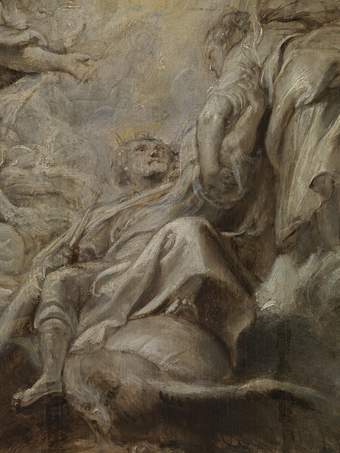
Fig.10
Detail of King James at the centre of the composition
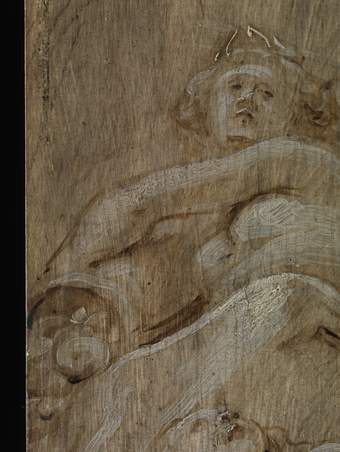
Fig.11
Detail of the figure of Plenty in slightly raking light from the left to show the impasto for the white highlights
Apart from the drawn boundaries for the cartouches, the design for the ceiling was painted directly onto the priming. The colours were mixed from a limited palette. Initial outlines and washes were done with thin, translucent, light brown paint; afterwards the composition was built up with mixtures of the following colours with expressive brushwork: white; shades of white mixed with brown; black; dark brown; and mid-grey. Pale opaque yellow was reserved for the light in the centre of the composition (fig.10). The thick white paint of the highlights throughout the composition looks as if it may be an emulsion of oil with a water-based medium – egg, glue or gum (fig.11). Traces of opaque brick red are visible here and there through the stereomicroscope but they are almost certainly by a later hand and look accidentally offset from another painting rather than applied deliberately with a brush. In general the painting is in very good condition. There is very little abrasion.
The painting is protected by a thin layer of what looks like a natural resin varnish, applied fairly recently. It has become slightly yellow but it is clear and attractive.
January 2019
